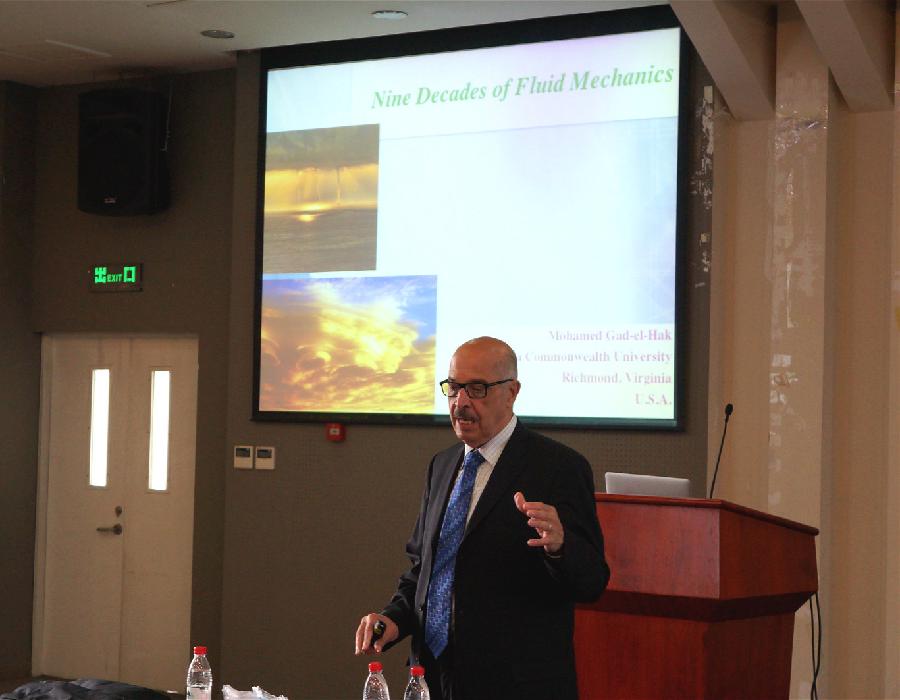Seminars
-
[2016-10-19]
Nine Decades of Fluid Mechanics

Dr. Mohamed Gad-el-Hak, the Inez Caudill Eminent Professor of Department of Mechanical & Nuclear Engineering, Virginia Commonwealth University in U.S.A, presented a seminar titled “Nine Decades of Fluid Mechanics” in PKU on Oct. 14, 2016. The following is a summary of his talk.
Fluid is the most important state which occupies over 99.99% in Universe. The ASME hydraulic division started in 1926 and changed to Fluids Engineering Division since 1962. Nine decades have passed since 1926.
There are four golden ages prior to 1926. The first one is some 2000 years ago. At that time, Archimedes measured the body volume by measuring the fluid volume the body occupies. Roman’s aqueducts were also amazing. These two examples are fluid applications based on knowledge of hydrostatics. The second stage is the time Leonardo da Vinci (1452-1519) lived. Leonardo made detailed flow visualization in an art manner and maybe the first one to (accurately) describe the eddying motions and vortices. Leonardo’s findings are believed to have captured the essential features of the Richardson’s cascade and large-eddy simulations. The third stage is started by Newton. At that stage, Navier-Stokes equations were found and prefect flow theory was built. The fourth stage begins with the boundary layer theory proposed by Prandtl (1904). Boundary layer theory resolved the long-existed conflict between hydrodynamics and hydraulics. Later, Richardson (1881-1953) made the first weather prediction in 1920, taking six weeks to compute a six-hour forecast. His prediction, however, was totally wrong.
Now we turn to the last nine decades. The computer and laser were the greatest inventions in the last 90 years and perhaps even ever. Along with these two inventions, many theoretical, experimental and numerical advances have been achieved. The theoretical advances include
1. Similarity solutions
2. Stability theory: Orr-Sommerfeld equations, TS wave, (low-disturbance wind tunnels NBS, NIST)
3. Energy and momentum cascades
4. Matched asymptotic expansions
5. Multiple scaling analysis
6. Nonlinear dynamical theory
7. Two greatest achievements of turbulence theory: Komogorov scales & logarithmic law
8. Coherent structure
The experimental advances include
1. Hotwire (from single to 12 wires)
2. Laser: LIF, PIV, LDV etc.
The numerical advances are DNS, LES, RANS, massive data, etc.
The speech lasted about one hour. In discussion time, professor C. B. Lee asked “is there any big progress of fluid mechanics in the future?” Professor Gad-el-Hak answered that although fluid mechanics is one of the oldest science, quantum progress might also occur, since we have many big problems to solve. For example, it took me 14 hours to fly from Washington D.C. to Beijing. Is there any possibility to build a hypersonic vehicle so that it only takes two hours? Such is the big driven force to make great achievements in fluid mechanics in the future.
